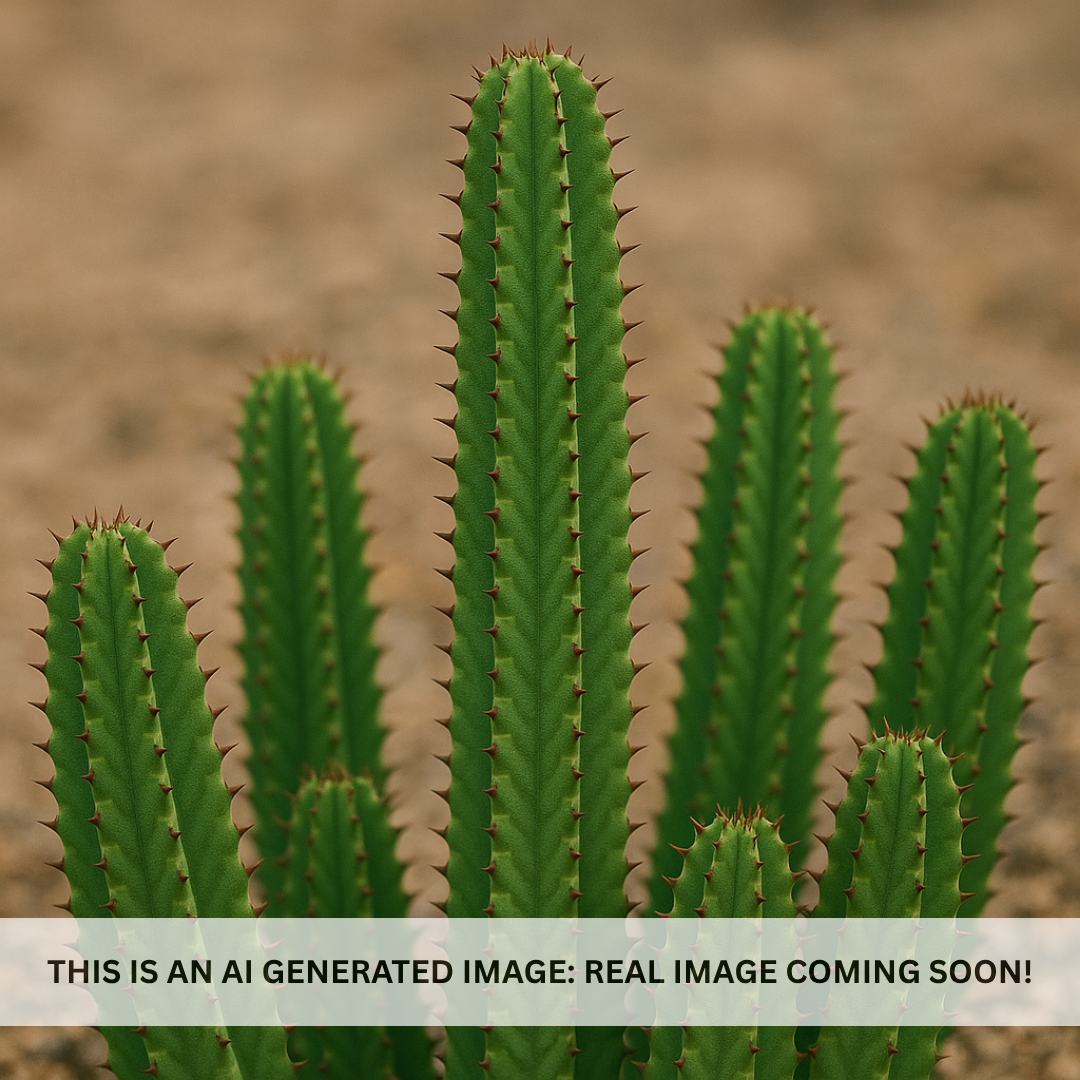My Store
Tanzanian Zipper Plant
Tanzanian Zipper Plant
Couldn't load pickup availability
Plant Type: perennial, succulent
Plant Height: 10–16 inches
Spread: 8–12 inches
Flower Color: reddish-brown to maroon cyathia
Sun Exposure: Full sun, Partial Shade
Tanzanian Zipper Plant / Euphorbia anoplia: A Sculptural Succulent for Modern Desert Landscapes
The Tanzanian Zipper Plant, botanically known as Euphorbia anoplia, is a distinctive and sculptural succulent that adds architectural beauty and rhythm to any Arizona garden. Its upright, ribbed stems resemble rows of green “zippers,” giving it a unique texture and personality that stands out in minimalist, modern, or desert-inspired designs. Native to Tanzania, this drought-tolerant perennial thrives in hot, dry conditions and offers an intriguing, geometric structure that remains attractive year-round.
Key Features of Euphorbia anoplia
This euphorbia grows in clusters of tall, columnar stems marked by symmetrical ridges that create a ribbed pattern. Each stem is edged with tiny tooth-like projections, enhancing its “zipper-like” texture. The plant’s deep green coloring can shift to bronze or red tones under full sun or cooler weather, adding visual depth and contrast. Small, reddish-brown to maroon flowers (cyathia) appear near the tops of the stems during warm months, adding a subtle accent to its sculptural silhouette. Like other euphorbias, it exudes a milky sap when cut, so care should be taken when handling or pruning.
Growing and Care Tips
Euphorbia anoplia flourishes in full sun to partial shade and thrives in fast-draining, sandy, or rocky soils. In the Phoenix Valley, it benefits from morning sunlight with protection from the harshest afternoon rays during summer. Overwatering is the most common cause of plant stress—always let the soil dry completely between waterings. This plant tolerates mild frost but should be sheltered or brought indoors during extended freezes. It adapts exceptionally well to containers and raised beds, where drainage is optimized, and its form can be appreciated up close.
Landscaping Uses
Tanzanian Zipper Plant is ideal for rock gardens, succulent groupings, and contemporary landscapes where clean lines and sculptural forms are desired. It pairs beautifully with rounder, softer succulents such as Echeveria or low-growing Golden Barrels, creating textural balance. Its compact size also makes it perfect for patios, entryways, and decorative planters. Whether used as a solo statement piece or as part of a multi-succulent display, it provides an eye-catching focal point that thrives with minimal care.
Summary
Euphorbia anoplia brings visual intrigue and resilience to desert gardens. Its ribbed, upright stems, subtle coloration shifts, and strong architectural form make it a favorite for those seeking structure and style without high maintenance. Durable and artistic, this succulent exemplifies desert elegance in its simplest form.
Three Timbers Installation Guide (Feel Free to Follow):
Euphorbia anoplia Planting Guide:
Location: Full sun to partial shade; best with morning sun and light afternoon protection during Arizona’s summer peak.
Soil: Use a cactus or succulent mix blended with sand or pumice for fast drainage and aeration. Avoid heavy clay soils.
Spacing: Allow 10–12 inches between plants for airflow and mature spread.
Planting Depth: Set the base of the stems level with the soil surface, ensuring the lower ribs are not buried.
Support: Not required; upright stems naturally hold their structure and form compact clumps over time.
Watering Guide:
Watering After Planting: Water thoroughly after installation to settle the soil, then allow the soil to dry out completely before watering again. For the first 2–3 months, water every 14–20 days depending on temperature and exposure.
When is the Plant Established? Euphorbia anoplia is considered established after 6–8 months, once new stems appear and the cluster begins to expand.
Watering Once Established: Water deeply but sparingly, typically every 3–5 weeks in summer and less during cooler months. Avoid watering during rainy or humid periods.
Drip Irrigation Setup: Place one low-flow emitter (0.5–1 gallon per hour) about 6 inches from the plant base. Angle slightly outward to promote wide root spread. Allow the soil to dry fully between irrigation cycles.
General Watering Tips: Always verify that the top several inches of soil are dry before watering again. Overwatering can lead to root or stem rot. Add a light rock mulch layer to conserve moisture and suppress weeds, but keep it a few inches away from the base to ensure airflow and long-term plant health.
Share












